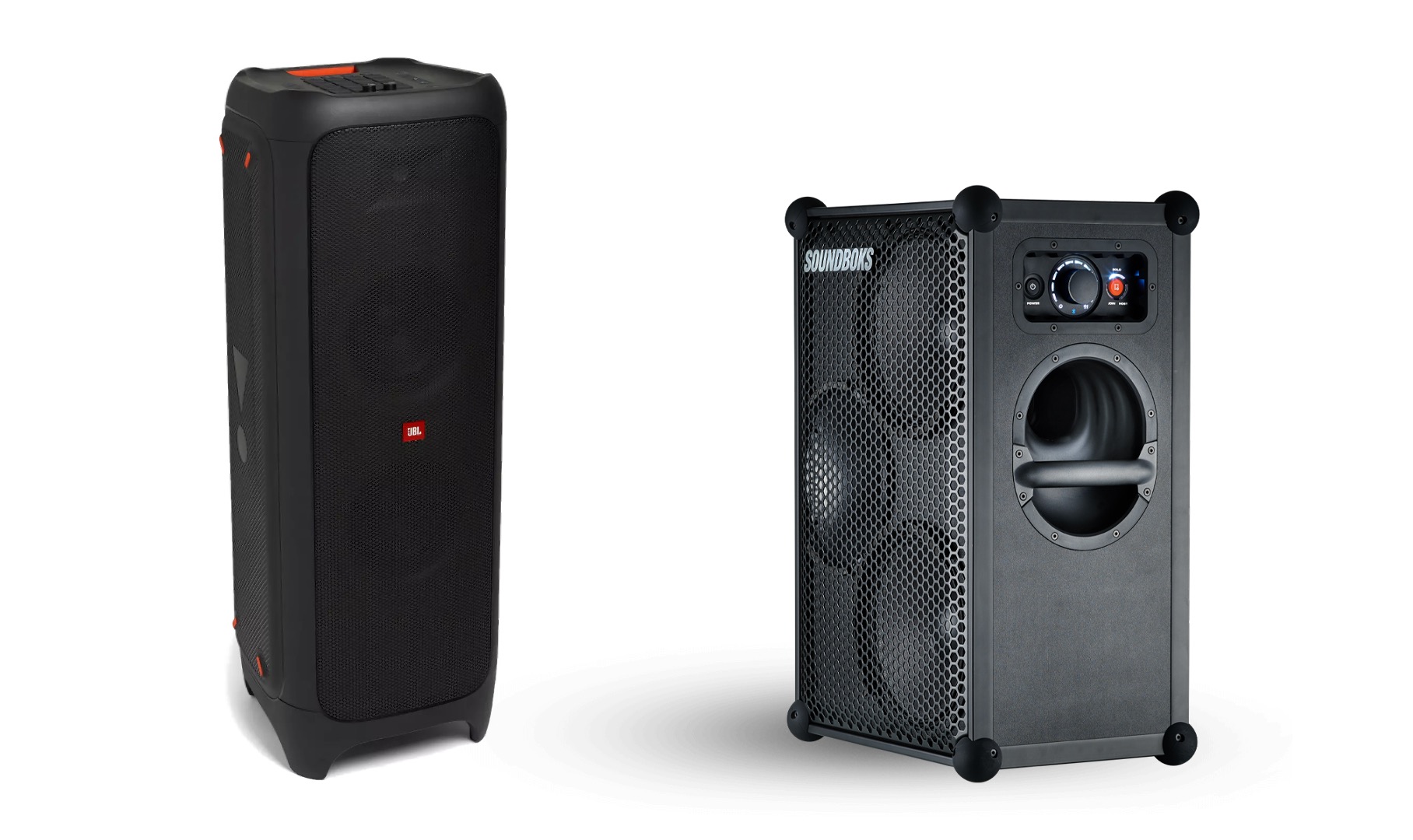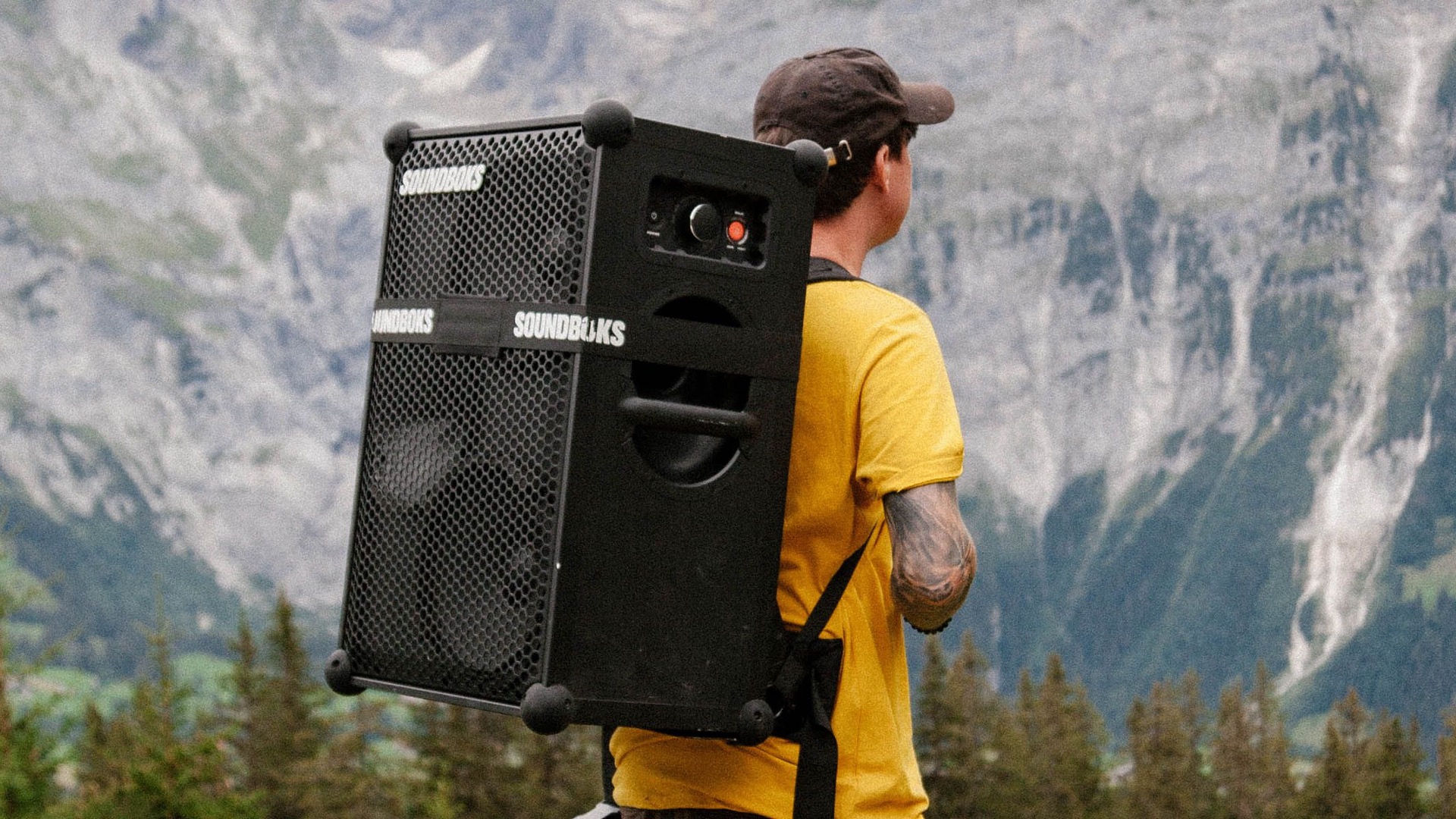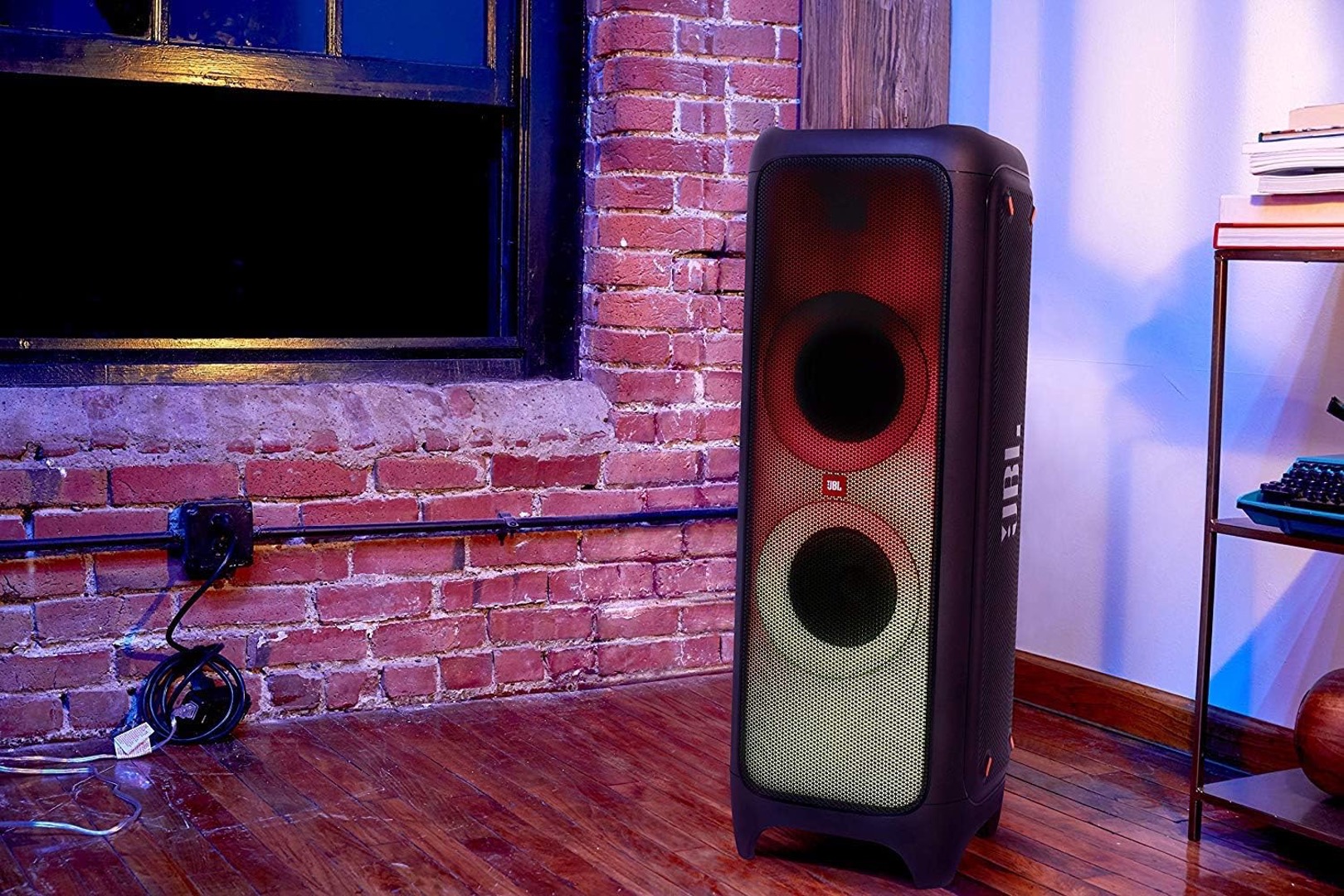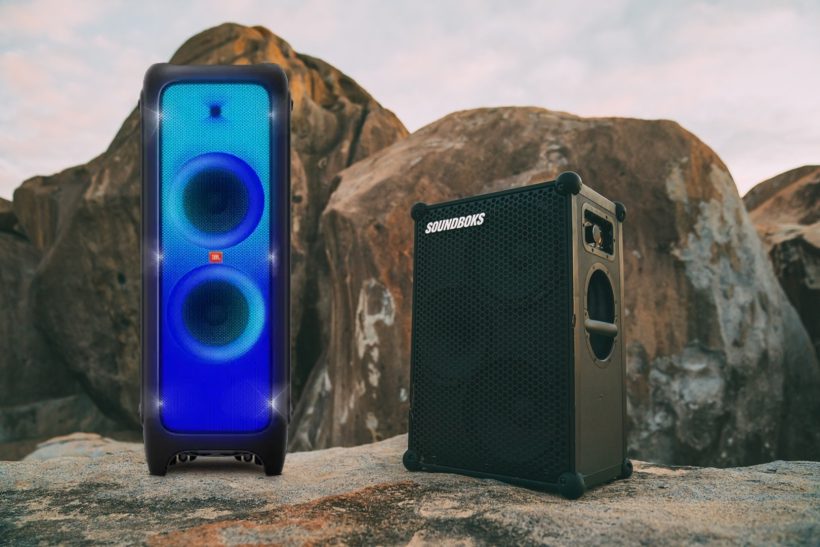The JBL PartyBox 1000 and the Soundboks 3 are some of the loudest Bluetooth speakers currently available that delivers extremely powerful sound with deep bass performance. The JBL PartyBox 1000 is currently the loudest JBL speaker and can deliver a massive 1100W of output power together with superb bass performance, and is great for outdoor parties and events where you need a portable PA system to blast music. The SoundBoks 3, by contrast, delivers up to 216W of output power (3 X 72W RMS Class D amplifiers) with a peak volume of 126dB, and is loud enough to fill a room or outdoor space with huge bass and volume output.
Straight off the bat, there are a few notable differences that should be mentioned. The JBL PartyBox 1000 is much bigger in size than the SoundBoks 3, and weighs a massive 54.2 lbs compared to the SoundBok 3’s 36 lbs. The JBL PartyBox 1000 is a wired-only speaker and requires a DC power outlet to power the speaker, while the SoundBoks 3 is battery powered which makes it more portable for outdoor use. The JBL PartyBox 1000 also comes with customizable RGB lighting while the SoundBoks 3 lacks any RGB lighting.
While the SoundBoks 3 may ultimately be the more portable option if you are looking for an outdoor speaker that you can bring with you on the go, the PartyBox 1000 is definitely louder and much more powerful than the SoundBoks 3 in terms of raw output power.

Sound Performance
When we tested the JBL PartyBox 1000 side by side with the SoundBoks 3 speaker, we felt that the PartyBox 1000 delivered way much more power and volume than the SoundBoks 3. The PartyBox 1000 has a massive output power of 1100Ws which dwarfs the SoundBoks 3’s 216Ws of total output power, and it sounds much louder than the SoundBoks 3 at 90% volume level. While the SoundBoks 3 does deliver really nice highs and punchy bass with its dual 10” 96dB woofers and 1” 104dB tweeters, we felt that the PartyBox 1000 delivered much better bass performance and overall sound quality. The sound on the PartyBox 1000 felt much fuller and well-defined, and the bass and midranges were present in every single soundtrack that we ran through the speaker. It can handle hip-hop music performances such as JVKE’s “Golden Hour” with really smooth vocals and much deeper bass response than the SoundBoks 3 – the PartyBox 1000 also has a much stronger midrange and sub-bass and it really gets you into the mood for a party with really deep beats. You can read our full review of the JBL PartyBox 1000’s volume and bass performance here.
The SoundBoks 3, by contrast, focuses on delivering loud volume output without much emphasis on the midrange and sub-bass notes; it does not sound as loud as the PartyBox 1000 and the bass starts to taper off at around 70% volume, while the PartyBox 1000 delivers consistently strong bass across all volume levels. In terms of raw volume and bass output, the JBL PartyBox 1000 wins hands down over the SoundBoks 3.

Specifications
Both the JBL PartyBox 1000 and the SoundBoks 3 are designed as portable PA sound systems where you can blast music outdoors at high volume output. Having said that, the JBL PartyBox 1000 is much heavier and larger than the SoundBoks 3 and is not waterproof, which means that it cannot be brought completely outdoors and exposed to rain or water. The PartyBox 1000 has a full panel lighting effect which creates a captivating light show for a visually stunning experience. One of the features that we liked about the JBL PartyBox 1000 is that it comes with a DJ launchpad which allows you to play drums, keyboard and piano instruments and record and loop on the fly. The PartyBox 1000 also comes with mic and guitar inputs which allow you to use the speaker as a portable PA sound system for on-stage performances. Like the other JBL PartyBox speakers, the PartyBox 1000 supports true wireless stereo where you can pair two PartyBox 1000 speakers together for a much wider sound field.
By contrast, the SoundBoks 3 retains some features which make it more portable than the PartyBox 1000. The SoundBoks 3 has the advantage of water-resistance and is unaffected by snow or rain, and the entire speaker is made from dust-resistant and durable materials to protect the speaker compartments. The entire speaker is designed to be portable and can also withstand sudden drops – it has a dentproof steel grill, splashproof electronics and shock-absorbing silicon ball corners which protect the speaker.
One of the biggest advantages that the SoundBoks 3 has over the PartyBox 1000 is that it comes equipped with a 40 hour battery life which allows you to listen to music for up to 40 hours at mid-volume, or at 5 hours at full volume (126dB). By contrast, the JBL PartyBox 1000 does not come with an equipped battery and requires a DC power outlet to run, which might be a deal breaker if you need a portable PA speaker to bring with you outdoors to a beach or pool party. You can also purchase an additional battery pack and swap it out of the speaker to keep the music going.

Design
The Soundboks 3 is designed to be portable and comes with dual 10” woofers and a 1” compression driver tweeter for crisp highs and vocals. Like the JBL PartyBox 1000, the SoundBoks 3 also comes with dual combo microphone and instrument (XLR or ¼”) inputs, and supports 3.5mm stereo inputs and outputs. This means that you can plug in your microphone or guitar into the SoundBoks 3 and use it as a portable PA sound system. It also comes with Bluetooth 5.0 technology and advanced bass DSP for deeper bass response. It has a wide frequency range from 40 Hz to 20 kHz and supports custom sound profiles with bass enhancer.
By contrast, the JBL PartyBox 1000 has a slightly wider frequency range of 30 Hz to 20 kHz, with the additional 10Hz making a slightly noticeable difference in the bass and sub-bass range. This manes that the PartyBox 1000 can deliver deeper bass notes that are great for EDM and rock music genres. The PartyBox 1000 also uses Bluetooth 4.2 which is a slightly older Bluetooth version as compared to the Soundbok’s 3 Bluetooth 5.0 codec.
The Verdict?
The JBL PartyBox 1000 wins hands down over the Soundboks 3 when it comes to absolutely volume and bass output. It has much more power (1100Ws) as compared to the SoundBoks 3’s 216W of output power, and delivers much deeper bass down to 30 Hz (which is comparatively lower than the SoundBoks 3’s 40 Hz). The PartyBox 1000 also comes with customizable RGB lights with a DJ launchpad which makes it particularly good for live performances and parties.
Having said that, we did find the Soundboks 3 to be a much more portable Bluetooth speaker with a built-in 40 hour battery life, which is a huge advantage over the PartyBox 1000 because it lacks any built-in battery and requires DC power. Furthermore, the Soundboks is water and dust-resistant, making it suitable for outdoor rugged use. It can also be easily hand-carried and can double as a portable PA speaker with XLR and ¼” microphone or instrument inputs.
If you are looking for pure output power and louder volume, we highly recommend the JBL PartyBox 1000. However, if you are looking for a speaker that is loud and portable for outdoor use, the SoundBoks 3 is the better choice due to its built-in battery and water-resistant design.

